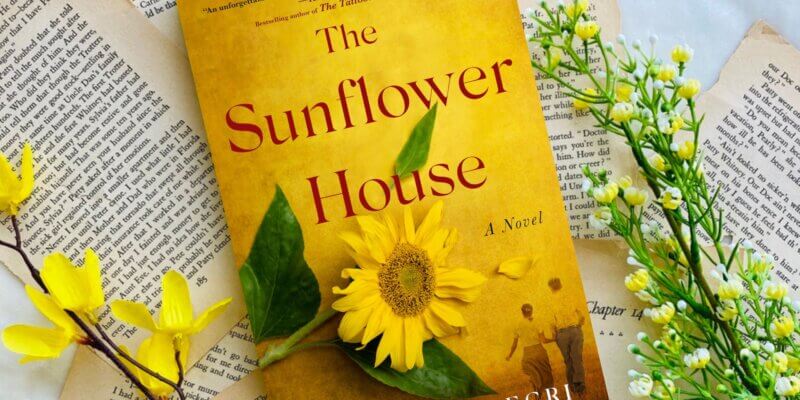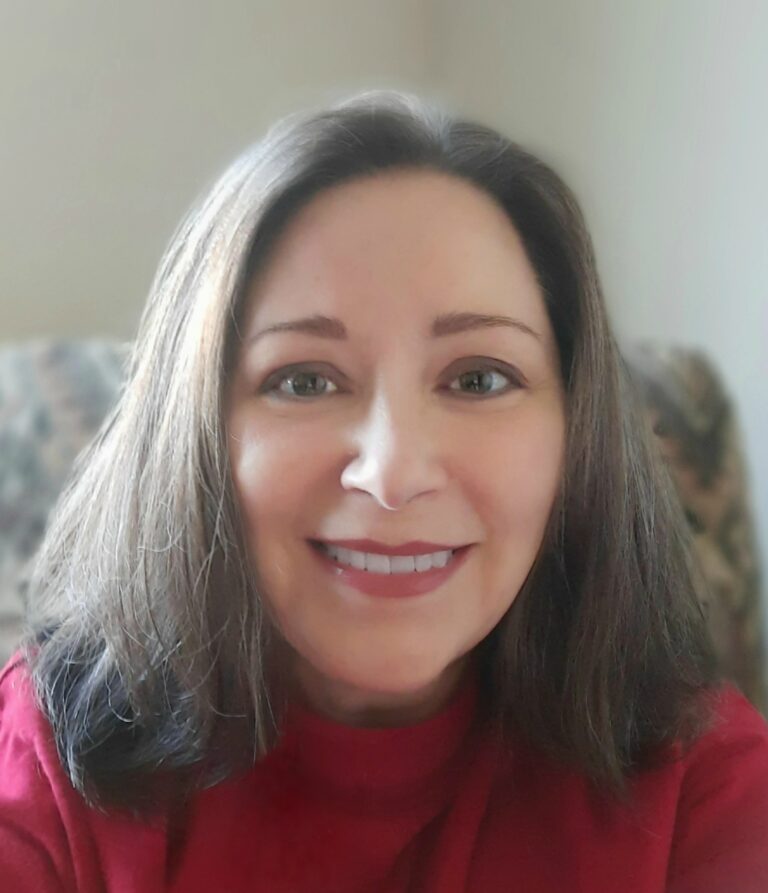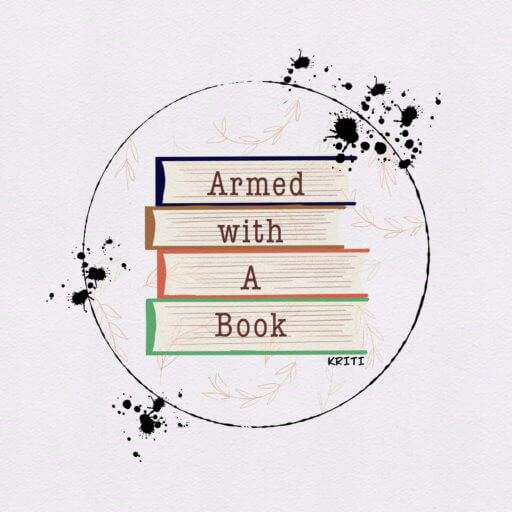Welcome back, friend! I shared about The Sunflower House yesterday. Today, I am honored to bring you an interview with the author, Adriana Allegri, about her inspiration, research and much more. I hope you enjoy it as much as we did!
The Sunflower House

Family secrets come to light as a young woman fights to save herself, and others, in a Nazi-run baby factory—a real-life Handmaid’s Tale—during World War II.
In a sleepy German village, Allina Strauss’s life seems idyllic: she works at her uncle’s bookshop, makes strudel with her aunt, and spends weekends with her friends and fiancé. But it’s 1939, Adolf Hitler is Chancellor, and Allina’s family hides a terrifying secret—her birth mother was Jewish, making her a Mischling.
One fateful night after losing everyone she loves, Allina is forced into service as a nurse at a state-run baby factory called Hochland Home. There, she becomes both witness and participant to the horrors of Heinrich Himmler’s ruthless eugenics program.
The Sunflower House is a meticulously-researched debut historical novel that uncovers the notorious Lebensborn Program of Nazi Germany. Women of “pure” blood stayed in Lebensborn homes for the sole purpose of perpetuating the Aryan population, giving birth to thousands of babies who were adopted out to “good” Nazi families. Allina must keep her Jewish identity a secret in order to survive, but when she discovers the neglect occurring within the home, she’s determined not only to save herself, but also the children in her care.
A tale of one woman’s determination to resist and survive, The Sunflower House is also a love story. When Allina meets Karl, a high-ranking SS officer with secrets of his own, the two must decide how much they are willing to share with each other—and how much they can stand to risk as they join forces to save as many children as they can. The threads of this poignant and heartrending novel weave a tale of loss and love, friendship and betrayal, and the secrets we bury in order to save ourselves.
Get to know the author: Adriana Allegri
Hi Adriana! It is a pleasure to have you on Armed with A Book. Please tell me and my readers a bit about yourself.

Hi Kriti, great to be here! My path to publication has been a 20-year journey, so it’s an understatement to say I’m thrilled about this debut. I’ve had two great careers—the first in education, and the second in marketing communications—and left corporate in 2015 to concentrate on writing. I’ve spent about half my life on the east coast in New Jersey but am happily settled in Arizona for now.
What inspired you to explore the lesser-known aspects of Nazi Germany’s eugenics program in your debut novel, The Sunflower House?
Two dreams inspired the book, so we’ll start there. I was a high school teacher on summer break and woke up crying with the idea for the prologue in my head. I dashed it out in stream-of-consciousness mode. Two weeks later, the same thing happened with what became the book’s epilogue. These two rough chapters had to do with family secrets, a box with a swastika, and a mother-daughter relationship that needed to be healed. It wasn’t a Lebensborn story at that point. Those chapters kept nagging at me, so I decided to do some research and find a story worth telling. I found an online article about Hochland Home early on, and then a book called Master Race at a used bookstore. It was riveting. So, that was the hook and the inspiration for me.
How did you research the historical elements of The Sunflower House, particularly places like Hochland Home and their role in the war?
When I first began my research, there was less online information about facilities like Hochland Home than there is today, but I began with Internet searches. Much of what I found online was inconsistent and had little depth, so I then turned to books—mostly used books, some of which came from overseas. I also lived about a 6-hour drive from Washington, D.C. at the time, and the U.S. Holocaust Memorial Museum had resources and books I couldn’t find anywhere else. Interested readers can find a list of books in the Author’s Note of The Sunflower House and at this link on my website: https://adriana-allegri.com/resources/
I felt that Allina’s role as a nurse at Hochland Home allowed for a nuanced portrayal of these facilities. What led you to consider making your protagonist a nurse?
I’m a pantser (not a plotter) so Allina’s assignment to the nursery wasn’t something I planned consciously; it unfolded as I wrote that scene. I was intrigued when that happened, because there were many possibilities for conflict. Allina was in an unbearable situation, given her background and the events that led to her placement at the home. The babies in her care would grow up to hate her, or worse, but when Allina saw their suffering, she couldn’t turn away. The mothers at the home each had their own motives, and the reader can grapple with those motives as seen through Allina’s eyes. Later in the story, when Allina realized her complicity, she had another series of choices to make. In hindsight, I hope all the conflicts might help the reader consider, “What would I do if I were in their place?”
What was the most surprising thing you learned while researching for this novel?
The biggest surprise was what happened to the children who didn’t thrive in these homes. I thought there would be systems in place to make sure these “perfect Aryan” children flourished, but that wasn’t the case. It was very naïve of me. The children were resources, and when neglected, seen as expendable. Himmler ordered the extermination of “abnormal” children who “according to the principles of selective eugenics reproduction, should never have been born.”
Allina’s emotional journey is central to the story. How did you approach writing her character development, especially after such traumatic experiences?
I see Allina somewhat like a Phoenix that rises from the ashes, because her life was destroyed early in the book. It came down to her choices. After catastrophic loss, the first decision Allina had to make was whether to live or die. Allina chose to live, which made other choices possible. When she discovered the neglect at Hochland Home, Allina identified with the suffering of these children and tried to help them. Ultimately, her compassion was the first step towards her healing, to a tentative friendship with Rilla, and a relationship with Karl.
In terms of Allina’s recovery from assault and portraying trauma, SA survivors beta read chapters and gave feedback, as events in this book unfold very quickly. There’s also a wealth of information online and in books. I hoped to portray her healing arc in a way that avoided triggering the reader.
Karl’s character stands out with his secret opposition to the Nazi regime. Was his character inspired by real figures, or did you create him purely from imagination?
For the most part, I created Karl from my imagination. Like Allina, his basic personality was fully formed when he first appeared on the page, and he revealed his secrets to me as the novel progressed. When it became clear Karl was working against the Reich, I conducted research into any Nazis who resisted Hitler. There were very few, and most stories from Holocaust survivors about soldiers who helped are anecdotal. For any of your readers who are interested, however, they can look into men like Helmut Kleinicke and Karl Plagge, who were notable exceptions, as well as the organizers of Operation Valkyrie.
The secrets in Karl’s past most definitely affect his character and actions. Even so, and regardless of personal circumstance, Karl’s resistance efforts were very rare for an SS officer, as mentioned in my Author’s Notes.
Do you have a favourite quote or scene in The Sunflower House that you find yourself going back to?
“Secrets can’t exist in the light of truth, and while the truth can be painful to hear, its lasting gift is peace. I know this is true, because my mother taught it to me.”
It sums up the journey for Allina and Katrine and closes the circle for them.
Were there any scenes that were particularly difficult to write? How did you overcome those challenges?
Two chapters were especially painful: Allina’s last chapter in Badensburg (before she’s taken to Hochland Home), and the final chapter written from Karl’s perspective. When I have difficulty tapping into particular emotions, I use music and movement. Music is a way to slip quickly into the heart of each character. For difficult scenes, I’ll use songs or pieces of classical music like a meditation and play them on repeat, usually while walking around. Once I get to the right place emotionally, the writing flows well. There’s a list of music for this book in a blog I wrote last year that may be of interest: https://adriana-allegri.com/whats-your-muse/
What is something you would like the readers of this book to take away or ponder?
No matter what happens to us, or how bitter our pain and loss might be, we still have the choice in how we react. In Allina’s case, she finds the strength and courage to act according to her principles. She chooses compassion instead of hatred or revenge. She chooses to forgive and opens herself to love. It’s our capacity to love that heals.
How did you balance the historical accuracy of the novel with the fictional aspects?
It’s a careful balancing act, one that requires balancing historical facts with character development. I wanted to include detail to build the world for the reader, so they’d feel immersed in Hochland Home. Details about fashion, food, music, theatre, art, geography and architecture of the time, among others, were also important. Finally, while the main characters in this book are fictional, many of the minor characters were real people and they needed to be portrayed accurately.
Then there’s the timeline. Since I knew the novel would span years and take place in different countries, I assembled a file in MS Word of major events, locations, and dates in those countries. I kept it on my computer and double check each scene against that list to make sure it worked within the timeline of various historical events.
My goal was to include enough historical detail to make the reader curious about Hochland Home and how it operated. This novel is like peeking through a keyhole at a very small slice of history and limited primarily to Allina’s point of view. But I hope it might encourage people to do additional research of their own.
For readers who enjoyed your book, what should they pick up next?
There are so many wonderful books by authors I admire, but two were released recently: The Booklover’s Library by Madeline Martin, and The Berlin Apartment by Bryn Turnbull. Shelly Sanders has an upcoming release in Spring/Summer of 2025 called The Night Sparrow, and I can’t wait to read it.
Are you currently working on any new projects or ideas?
My current passion project is a supernatural trilogy about La Strega, Italian witches. These books examine many of the concepts from The Sunflower House—choice, identity, power, compassion, and redemption—but from the perpetrator’s perspective, one who is seeking forgiveness. It’s been interesting, to say the least, exploring those themes solely from the monster’s point of view.
Is there anything else you would like to add?
Just a shout out to all my early ARC readers and reviewers. This book has been a dream for many years. The messages and support I’ve gotten from readers has been wonderful and I appreciate every single one.
Thank you so much for taking the time to chat with me and share with my readers.
Thanks so much for having me!
AA
Thanks for joining us! Connect with Adriana on:
Her website: https://adriana-allegri.com/
X/Twitter: @adrianaallegri
Instagram: @adrianaallegri
TikTok: @adrianaallegri
Facebook: adriana.writes
I hope you will check out The Sunflower House on Goodreads. My review is posted here.
Many thanks to St Martin’s Press for giving me a chance to highlight this book on my blog in exchange for an honest review. 🙂

Be First to Comment